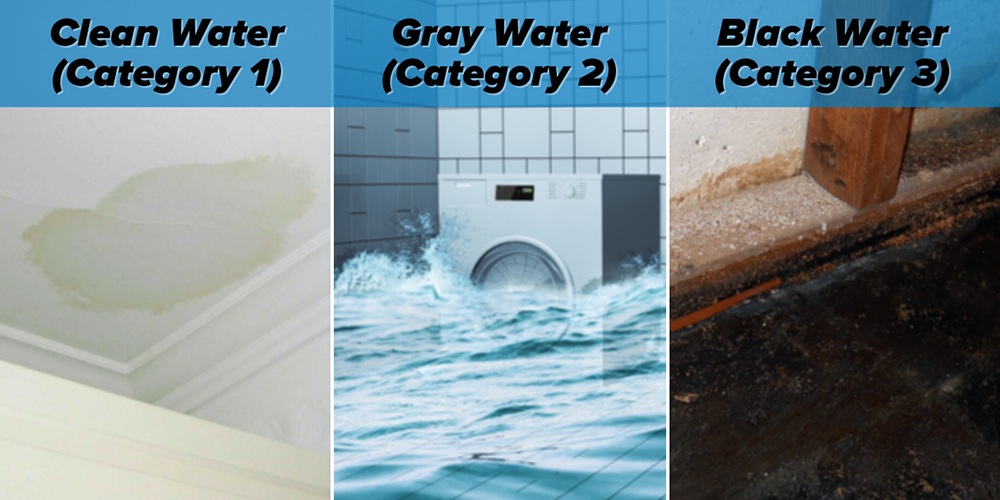
There are 3 types of water damage according to the different categories of water. Preair will introduce the three types of water damage for you and it will make you clear the damage level your house has suffered. With a better understanding, you can choose the proper dehumidifiers more easily.
Category 1: Clean Water
Floodwater that does not pose an immediate health threat is known as clean water. Clean water floods can lead to Category 1 water damage. Clean water floods can result from malfunctioning appliances, toilet holding tanks, and melting snow and rainwater.
Clean water home floods are generally safe for you to clean up yourself, as the water poses no immediate risk from exposure or ingestion, but remember--time is an important factor. Standing clean water can morph into Category 2 or greywater in as little as 48 hours.
Category 2: Grey Water
Category 2 water damage is caused by greywater, sometimes called sullage. Greywater refers to wastewater that is not contaminated with fecal matter. As far as household wastewater goes, greywater could include water from bathtubs and showers, washing machines, dishwashers, and sinks. It generally contains fewer pathogens than blackwater and can be reused for non-potable purposes, such as toilet flushing. Greywater still contains small amounts of contaminants and can induce illness if ingested.
Floods by greywater can be caused by a weather event, an overflowing plumbing fixture or appliance, or even a broken pipe. This type of greywater can saturate carpeting, furniture, and drywall. If you experience a home flood with greywater, take caution when beginning the cleaning process. Wear protective gear, and keep children, pets, and individuals with a compromised immune system away from the flooded area. If the flood is extensive, such as several inches of water in the basement, it is advisable to hire professionals to safely clean up and decontaminate the area. Cleanup must begin immediately--again, Category 2 floodwaters can progress to Category 3 in as little as 48 hours.
Category 3: Black Water
Category 3 or blackwater refers to wastewater contaminated with human waste and other pathogens or toxins. Blackwater comes from flush toilets and bidets or broken sewage pipes and contains human waste such as urine and feces as well as toilet paper. Blackwater can also include water from food preparation sinks, dishwashers, and other sources. Raw sewage is classified as blackwater. Blackwater is a haven for dangerous bacteria and pathogens that must fully decompose before being released into the environment. It can also be contaminated with dissolved chemicals and particulates, making contact even more dangerous.
Any large-scale flooding that includes seawater, rising water from rivers or lakes, and water that enters buildings as a result of weather events, such as hurricanes or storms, can potentially carry contaminants and is automatically characterizes as blackwater.
When it comes to home flooding emergencies, blackwater floods are the most dangerous and the most destructive. Because of the grossly unsanitary conditions of the water, porous and absorbent items such as carpets, upholstery and drywall are often unsalvageable. Contact with blackwater via ingestion or skin contact can cause illness in both humans and pets.
Post time: Apr-09-2024

